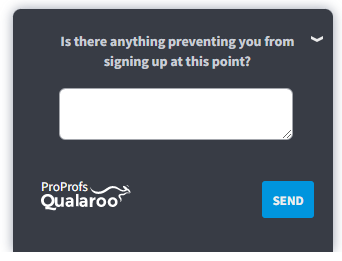Every marketer becomes a better marketer with an increased understanding of the customer.
Why is it, then, that so few content marketers talk to customers? When is the last time you polled your readers? Ran an experiment?
The editorially-driven aspects to benefits of content marketing can sometimes safeguard against iteration and learning. “Our readers like X about our content,” you say. I say, “how do you know that to be true?”
Qualitative data is awesome. It can help us improve ecommerce UX bottlenecks, fuel a better product experience, or give us ideas for experiments.
Overlooked, however, are all the benefits that lie in the qualitative data for content marketers and bloggers.
What Google Analytics Can’t Tell You
To get the disclosures out of the way upfront, I’m a big quantitative data nerd. I’ve spent years learning the ins-and-outs of Google Analytics, and I feel comfortable writing somewhat detailed SQL queries. I even learned the R language for data analysis.
However, not all the answers can be found in the numbers. Sometimes, you need to shade in the painting with some qualitative colors.
In the domain of content marketing, you can certainly learn a lot from Google Analytics. You can find out things like:
- How many visitors came from organic search in a given time period to a given blog post
- How a given blog post influenced leads or conversions
- How far readers scroll down the page (if you set up scroll depth tracking)
- Where your audience comes from and what their make-up is (which channels did they come from? What device do they use? What demographics are they?)
That’s just a sampling of good questions you can answer with Google Analytics. In reality, there are many more use cases.
But here are some business questions Google Analytics is not good at answering:
- Do readers enjoy reading the content I’m writing?
- What topics do readers enjoy the most?
- Are there questions the reader still has after reading the article?
- Can readers sign-up for content offers, demos, purchases, etc. (whatever the conversion goal is) easily? Is the offer even aligned to what they want?
- What language resonates most strongly with my core audience and target persona?
For this stuff, you need to dip your toes into the qualitative waters. Luckily, there are many survey tools that can help you nowadays.
There are two huge benefits to collecting and analyzing qualitative data for bloggers:
- Improve the user experience of your blog
- Increase the relevance of your content to your audience
Keep these in mind as we walk through different research tools and examples in the section that follows.
6 Qualitative Research Methods (And How They Help Your Blog)
We’ll walk through six specific research methods and tools, though this list isn’t exhausted (there are many other pools of qualitative data you can swim in):
Let’s dive in.
Website Polls
How website polls are helpful for bloggers:
- Find out what anonymous website visitors think about your content
- Crowdsource ideas for new topics and angles from readers
- Use polls to generate leads or build your email list
First and foremost, my favorite qualitative research tool for bloggers is the website poll. Here’s what it looks like:
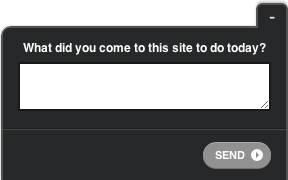
That little poll module usually pops up on the bottom left-hand or right-hand side of the browser, and you can trigger it in many ways.
You could show it immediately, upon exit-intent, after scrolling a certain depth on the page, or after a set time period.
Additionally, you can trigger polls based on audience and behavioral parameters, such as URL string (including query parameters), device type, and geolocation.
The biggest benefit of polls over other methods is that you sample from a broader audience. Whereas you can only survey those whose emails you’ve already collected, a website poll can appear to all readers, whether they are anonymous first-time visitors, customers, or email subscribers.
This can increase the reach and relevance of business questions, especially those that help content marketers improve their blogs. I love questions like these:
- “What topics would you like to see us write about next?”
- “What other products would you like to see us offer?”
- “Was this help section useful?”
- “Did this article answer your question?”
- “Were you able to find the information you were looking for?”
- “What other information would you like to see on this page?”
Additionally, you can ask readers questions about themselves to gain insights that don’t appear in Google Analytics. If you wanted to crystallize your buyer persona, for instance, you could ask:
- “What other blogs about [topic] do you read?”
- “Who are your favorite influencers in [topic]’?
Sometimes, I like to go very specific in terms of conversion paths. For example, lots of bloggers write product listicles, but how much do you actually know about the visitors who land on that page?
Concretely, an article on “best landing page builders” could ask:
“Do you currently use a landing page tool?” with a Yes or No response.
If they say “yes,” you could follow up with a multiple-choice question and ask which platform they use.
This could help you figure out which affiliates to work with or how to design the CTA/lead magnet on your page:
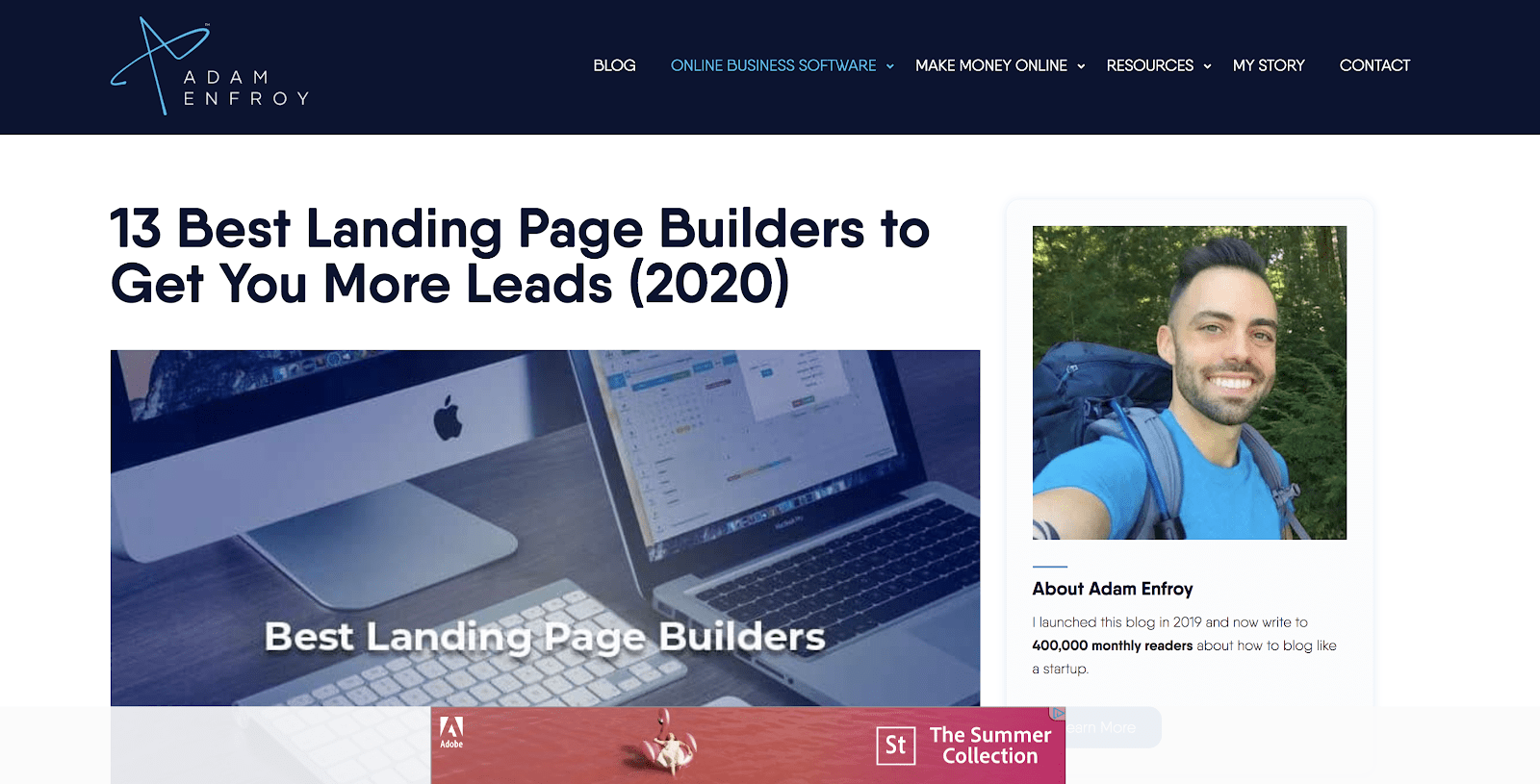
You can also improve the quality of an individual article for future content updates.
For instance, you could write a listicle of the best blogging books, and ask them what other suggestions they have that you may have missed.
So, when a blogger like Ryan Robinson next updates this piece, he could:
- Include suggestions from readers, and maybe even include a graph of the popularity of different suggestions (which could help build links).
- Further, he could ask for an optional email address on responses, and if he includes their suggestion, he could reach out to them for a quote or to help share the newly updated article):
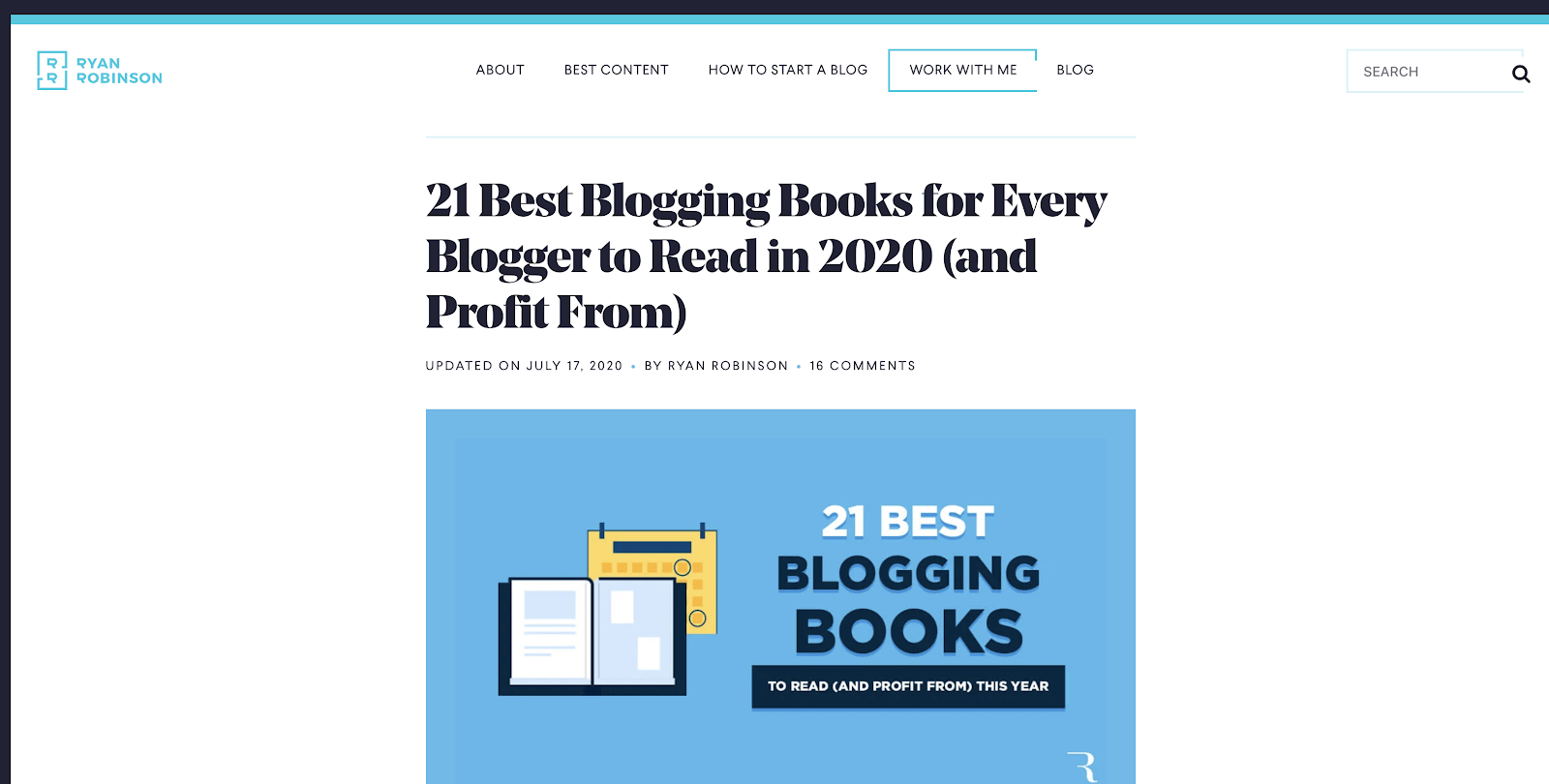
The potential use cases are pretty much limitless, but you get the idea. Polls are genuinely my favorite tool for content marketing programs, and you can’t go wrong putting up a Qualaroo poll to get some of these answers and ideas.
2. Surveys
How surveys are helpful for bloggers:
- Find out who you readers are, what their desires and problems are, and what kind of content they’d prefer to consume
- Crowdsource ideas for new topics and angles from readers
- Monitor reader satisfaction, deepen engagement and add depth to your customer and reader data
My next weapon in the article surveys — more specifically, blog reader surveys.
As I alluded to above, the difference between polls and surveys is that you can only survey people whose emails you already have. Surveying your readers, leads, or customers using an online survey software can be incredibly valuable though (especially if you can segment by the most valuable readers, leads, or subscribers to weigh your responses).
Typically, I add a reader survey to my email drip sequence when a visitor signs up for my email list.
I learned this from business strategist Peep Laja when I was at CXL, where I saw the countless ways surveys like this could be valuable.
Not only did we learn what topics people wanted to learn more about, but we were able to find pain points that could lead to new products or monetization opportunities (such as CXL Institute, CopyTesting, and the variety of other cool things they continue to do in the optimization space).
Now, the question everyone wants to know is this –
What questions does one ask on a reader survey?
The annoying and ever-prevalent answer is – “it depends.” Take a step back and think about what you don’t currently know about your readers that would be valuable knowledge. Think in terms of interesting business questions. Don’t currently have access to those answers or insights? That may be a good candidate for a survey question.
However, there are usually question themes that are answerable via reader surveys. You can learn these things quite readily:
- What topics do people care about
- What pain points do readers have
- How they found your blog and why they signed up
- Who they are more generally
Here is, for instance, a quick survey that we designed for a client in the content marketing software space:
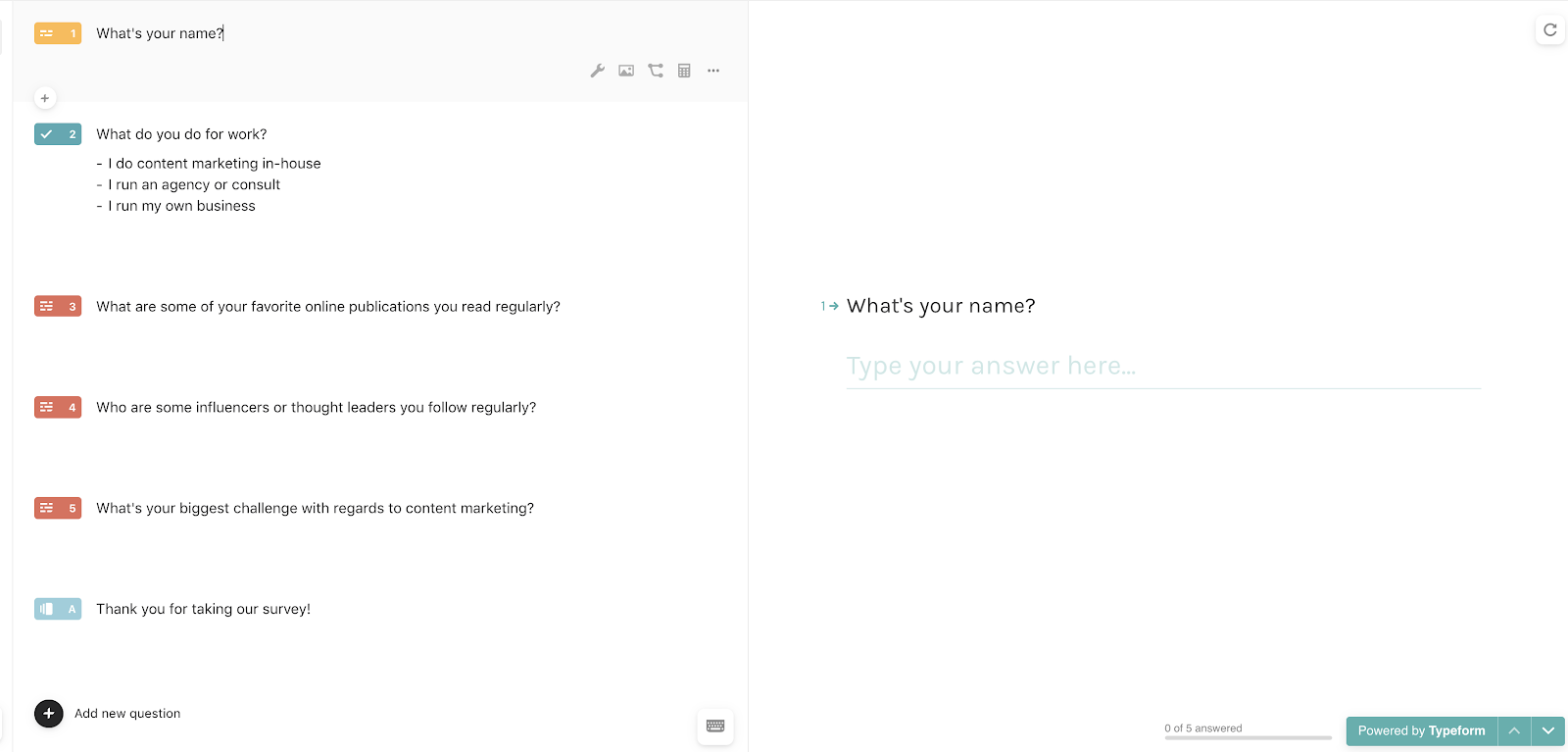
This has fed countless content ideas, given us knowledge about the make-up of our readers, and allowed us to find ideal companies and influencers with whom to partner.
Running a survey also gives you the opportunity to reinforce your content with real primary data. You can then visualize the survey results to promote your blog post on social media.
3. Session Replays
How session replays are helpful for bloggers:
- Watch how actual anonymous videos use and interact with your website
- Identify and fix user experience bottlenecks
- Figure out the actual impact of different content types or elements on your blog
Next, we have session replays.
These are one of my favorite tools for conversion rate optimization research, but they’re also quite useful for content marketers.
We can get data on dwell time and page depth from Google Analytics, and we can look at heat maps to see where people click and hover. But there’s just something a little bit richer about watching anonymous visitors use your website.
One example of how that may be useful is watching how visitors who end up converting have interacted with your blog. Were there any moments of frustration (typically exemplified by things like rage clicking or pausing extensively before moving on) before converting? Did they dwell on any particular modules, such as video or imagery?
Additionally, you can see how impactful and how much attention multimedia such as videos are receiving on your page. For example, AppSumo includes videos on their blog posts. Do visitors watch these? For how long? Do they then bounce, continue reading, convert, something else?

Unfortunately, it’s quite difficult to parse out trends from session replays because there are so many to watch through. But some tools, like TryMyUI, automatically flag videos with signals of user frustration to help you find insights faster.
Alas, session replays probably won’t help you find new topic ideas or figure if your topics themselves are resonated. However, they are solid gold for finding and diagnosing unknown user experience errors, which is a massively underrated and valuable project that is rarely done on blogs.
Improve the user experience, and you’ll often find that other important metrics such as traffic, engagement, and conversions will also rise.
4. User Testing
How user tests are helpful for bloggers:
- Identify and fix user experience bottlenecks on your blog
- Learn how people search your blog or approach your site when trying to accomplish something specific
- Feel empathy for readers and learn what their reading experience is like
User testing also falls into the user experience research bucket, but instead of passively collecting anonymous videos, you actively recruit test users to navigate your site and accomplish tasks.
Here’s how a user test works:
- You recruit test users (through a tool like UserTesting or through your own network)
- You design tasks for them to accomplish (usually one specific one, and one more general exploratory one)
- You analyze the results quantitatively (how long did it take to complete the task) and qualitatively (what problems did they have trying to accomplish the task).
Again, this is incredibly useful on the conversion optimization front, but I think blogs can also benefit from this type of thinking. Let’s walk through a hypothetical user test using an example website, Lokalise (a localization software).
If you were to design a user test for their blog, you might want to ask participants to do two things:
- First, a specific task, such as “find a blog post about localization best practices and then sign up for the lead magnet that is offered on that page”.
- Second, an exploratory task such as “find a content resource that could help your product team learn how to internationalize your product”.
In both tests, you’d start them out on the blog homepage and then watch their actions from then on.
The difference is that the first specific task has a “correct answer” in that they should be able to find a specific article on that topic, like this one, and sign up for the e-book on the page. How they search and find that article, and how they are able to sign up for the e-book is interesting.
Related Read – 15 Best Usability Testing Tools For An Effective User Experience Strategy
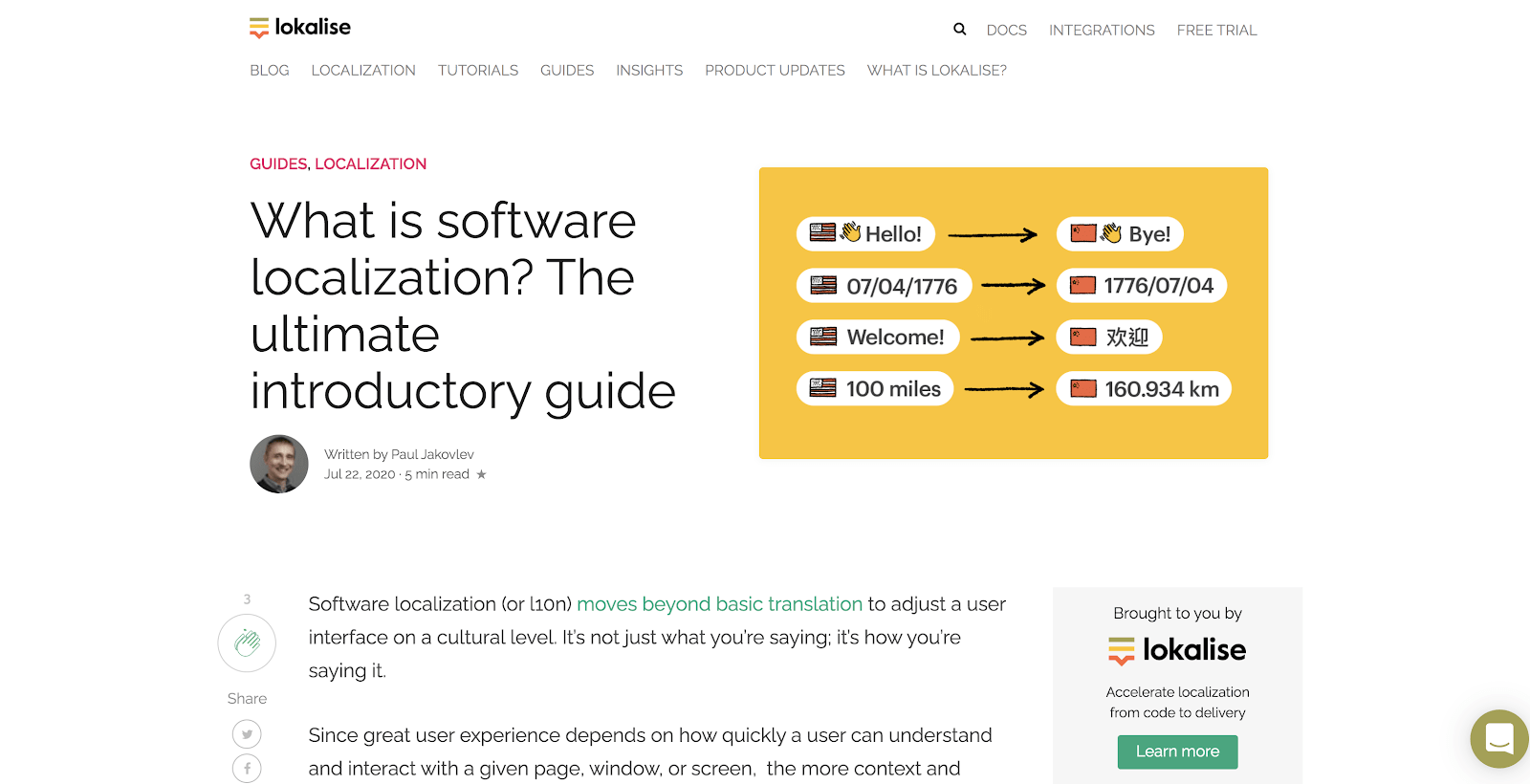
And in the second task, you’ll find out how visitors would browse if they had a concrete problem but no leading ideas on how to find the answer. You’d watch them interact openly with the website and see what solution they end up if and if it’s satisfying.
User testing is something I always do when optimizing a website or a blog.
Another cool related research tool is CopyTesting (which I mentioned above — a new product from the CXL team). This is specifically designed to test copy and messaging on a landing page and figure out where it can be improved and what is good and bad about the copy. I’m pretty bullish on this tool.
Without a ton of traffic to run A/B tests, it’s always been very difficult to figure out how your copy is performing and how it could be improved. This tool offers an awesome way to do that for companies, both big and small.
5. Interviews
How interviews are helpful for bloggers:
- Open-ended questions allow you to learn things you never knew to ask or think about
- Add depth and empathy to your customer and reader knowledge
- Learn what other blogs, influencers, and sources people are consuming
Every now and again, you should interview your readers or customers one-on-one.
Startups are great at this. Big companies start to lose touch with the customer on a one-to-one basis. However, everyone benefits immensely from qualitative interviews.
For starters, it can add color and depth to all of the other qualitative insights you’ve gained with more technical methodologies. Session replays, user tests, surveys, and website polls are great at aggregating ideas, customer pain points, and bottlenecks. But an interview can lead you to truly understand the depth of the problems users are facing and, perhaps more importantly, the exact words they use to describe them.
The exact nature of your customer interviews can vary depending on the questions you want to answer. I generally find keeping a few prompts on hand is helpful, but you really want to let the interviewee feel free to talk and explore their thoughts freely. The less you can interject and the more you can encourage free expression, the richer your data will be.
I don’t believe there’s a true replacement for talking to customers yourself, but you can also find some of these insights by talking to customer-facing teams like customer support or sales.
Endear talks about this as being one of the big value-adds of retail staff in an age of increasingly digital experiences. Not only can they add a warm touch to the customer experience, but they can store insights about what kind of pain points customers come in with and who they are on a deeper level than analytics can show you.
Read More – 100+ Market Research Questions to Ask Your Customers
6. Forum and Review Mining
How forums and reviews are helpful for bloggers:
- Find out how people talk about your brand or blog when you’re not looking
- Access Voice of Customer insights to help craft copy, offers, and ideate topic ideas
- Learn how people describe your business in relation to competitors and the market
The last one is one of my favorite ways of both finding specific phrases for copywriting and for coming up with very specific topic ideas for articles based on customer pain points.
Despite your intentions, if someone knows they are being interviewed, their answers will subtly change. If someone fills out a poll or a survey, they know they are being surveyed and want their responses to reflect that. It’s the same case with interviews.
But you can see how customers talk about you, your products, your competitors, and your industry in general when you’re not looking by analyzing review sites (Amazon reviews if you’re selling consumer goods or G2 if you’re selling software) or forums (Reddit and Quora are the big ones).
Selling SEO software? Check out Reddit threads on “best seo tools” and see which competitors are mentioned and how people describe the tools.
You may be able to find specific phrasings that could result in high intent long tail article ideas. For example, “spying on competitors backlinks,” and “local SERP analysis” were two phrases I just found on this thread:
Read More – Here is our list of Best Market Research Tools

BuzzSumo even offers a tool to help find questions on the web related to a given keyword:
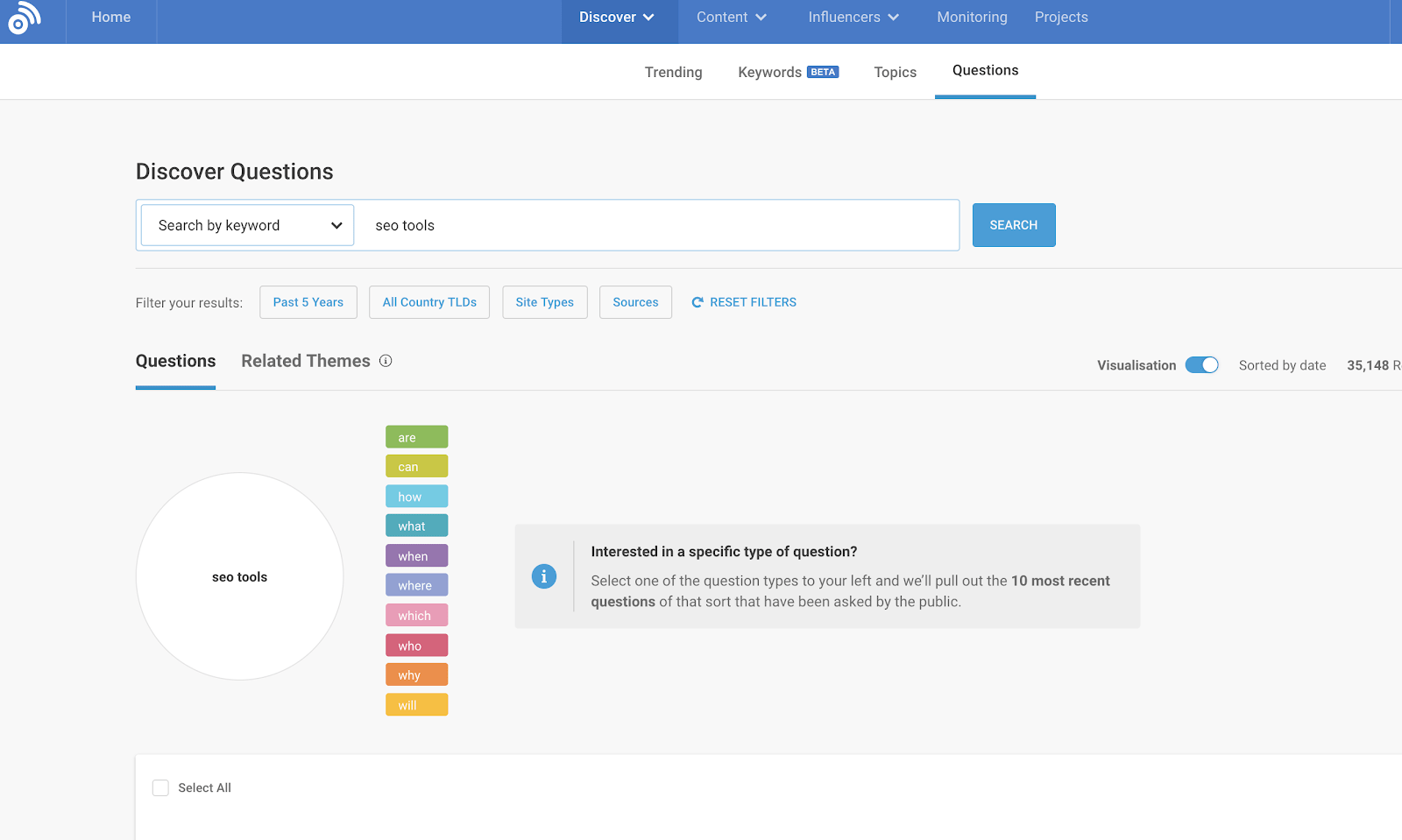
Here’s an insightful discussion on active/passive data and how you can set it up for your business:
Finally, these insights can and should be used for copywriting and product messaging, but this article isn’t the place to explore that (it’s a huge topic). Instead, I’ll link you to my favorite resource on the topic by Joanna Wiebe.
Qualitative Data=Real Insights
I love Google Analytics, and I love quantitative data. But when it comes to any type of marketing, but especially content marketing, qualitative data is where the real insights are.
Whether you want to ideate topics based on customer pain points, figure out if the content is resonating, or optimize the performance and architecture of your existing content and blog, qualitative methods are great ways to find solutions to these problems.
Whether you need Qualitative or Quantitative data, a contextual feedback tool like Qualaroo certainly makes the job easier and more effective.
This post was written and contributed by Alex Birkett of HubSpot.
 Tips
Tips
We’d love to hear your tips & suggestions on this article!
FREE. All Features. FOREVER!
Try our Forever FREE account with all premium features!

 We'd love your feedback!
We'd love your feedback! Thanks for your feedback!
Thanks for your feedback!






